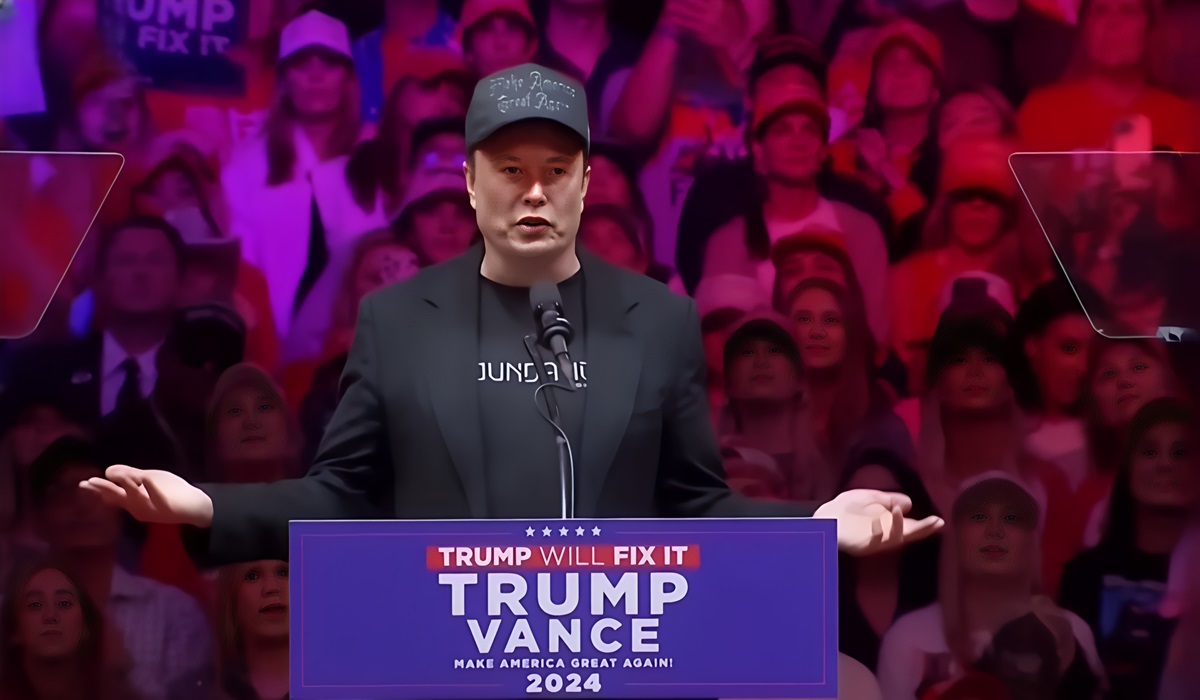Resonate Reveals 10 Voter Segments That Will Determine the Outcome of the 2022 Midterms
- TDS News
- Trending
- U.S.A
- World News
- October 13, 2022

Data Firm’s Unique Segmentation Uncovers the Keys to Voter Decision-Making in This Year’s Elections
Resonate, the leading provider of A.I.-powered data and intelligence released new research that identifies 10 unique voter segments that campaigns and candidates must consider as they enter the final phases of the mid-term elections. These key voter segments are available for immediate activation across all media digital channels, including CTV.
“Elections are won by the campaigns and candidates that best engage and motivate voters,” said Bryan Gernert, CEO of Resonate. “The key to better targeting and more effective persuasion is recognizing the unique and nuanced attributes that influence voting decisions. By partnering with Resonate, the leader in AI-powered data, campaigns can understand and act based on the latest data, at scale, to galvanize the voters needed to win.”
There are 10 U.S. Voter segments in the Resonate 2022 Midterm Voter Landscape that comprise the full U.S. electorate:
- The “Resistance” Democrats (10.2% of U.S. population) will most likely mail in their ballot, but rest assured they will vote. This high turnout group lives mostly on the West Coast, tends to skew much older, and is most likely retired. They are also the most socially liberal group of Democrats but are the least interested in police reform and racial equality.
- The Build Back Better Democrats (9.4% of U.S. population) are another high-turnout segment you’ll see at the polls. This group lives largely in New England and the Midwest, and it is mostly comprised of baby boomers and Gen X. This audience has diverse interests, most of them apolitical, and is largely made up of teachers.
- ConservaDems (8.5% of U.S. population) will see you at the polls. This group is largely made up of millennials and majority-minority voters. Like the Build Back Better Democrats, they have a range of interests but are slightly more politically engaged. ConservaDems like to share their opinions publicly, and you can find them on Instagram.
- The Vote Blue No Matter Who (4.8% of U.S. population) are the most generationally diverse group of Democrats. This straight ticket audience shares some similarities with ConservaDems, including being majority-minority and blaming inflation on specific products becoming more expensive. You’ll see this high-turnout segment at the polls.
- Disenchanted Liberals (15.8% of U.S. population) make up the youngest segment, comprised largely by Gen Z, which means some of these voters will be at the polls for the very first time. As the name insinuates, Disenchanted Liberals are distrustful of both parties and didn’t vote in the last presidential elections despite being eligible.
- The Unregistered Independents (23% of U.S. population) don’t particularly care about politics, which is why you won’t see many of them at the polls this election cycle. While over half of this group remains undecided on what political party to trust regarding healthcare and education, over 30% favor Joe Biden and the Democratic Party.
- The Ultra-MAGA (9.1% of U.S. population) are a rural, straight-ticket, high-turnout Republican group who believe Trump made America great again. This largely suburban audience doesn’t trust mail-in voting but will vote early. They’re the group most likely to disapprove of Biden’s policies and believe they are the top reason for inflation.
- You may not see Reaganite Republicans (7.4% of U.S. population) at the polls. This mid-to-low turnout group is also the least likely to be registered Republican in the GOP and seems disengaged but consumes a fair amount of political content. They consider Russia a major threat to the U.S. and have an appetite for alternative energy sources.
- Conceited Conservatives (6.4% of U.S. population) hold the highest voter turnout of the GOP, with 80% showing up to vote. This group isn’t too worried about the national debt, but they care about their finances. While many Republicans vote because it’s their civic duty, this predominantly Hispanic segment votes based on personal economic benefit.
- You may or may not see the Republicans in Name Only (5.3% of U.S. population) on election day. Most in this group vote half the time or less. However, they’re also the most likely to vote early or by mail. Most don’t believe Biden was the legitimate winner of the 2020 election and think too much government spending is to blame for inflation.
To build this unique voter landscape, Resonate leverages its best-in-class AI-data engine which combines data from the nation’s largest continuous voter survey, including questions related to today’s most relevant political and policy issues, with behavioral data at scale. Machine-learning algorithms enable Resonate to yield thousands of individual-level insights on every eligible voter, from their party, policy positions, preferred voting method, psychological drivers, personal values and more. Lastly, Resonate uses AI to cluster and segment the eligible electorate based on the most fundamental and relevant attributes to predict 2022 midterm voting behavior.
Read the complete findings of Resonate’s 2022 Midterms Voter Landscape research here.
Resonate’s deep history in helping political campaigns identify and target niche voter audiences has manifested in a strong track record of candidate victories. The unique voter segments identified through Resonate’s unprecedented study are now available for targeting via the Resonate Ignite platform.
Headquartered in Reston, VA, Resonate is a pioneer in A.I.-driven data and intelligence, delivering deep, dynamic data, for analysis and activation, directly through its easy-to-use SaaS platform or through highly rated Managed Media Services. The Resonate proprietary, privacy-safe data set includes more than 14,000 rich, relevant, real-time data points that describe more than 230 million U.S. individuals. Hundreds of companies use Resonate to drive better marketing strategy and execution fueled by a more comprehensive understanding of their audience that extends beyond traditional demographics, psychographics and behavioral data to uncover why people choose, buy or support certain brands, products or causes. /Public Release. The views expressed are the author’s opinion. To view it in full, please click here. For more information, please visit www.resonate.com.








